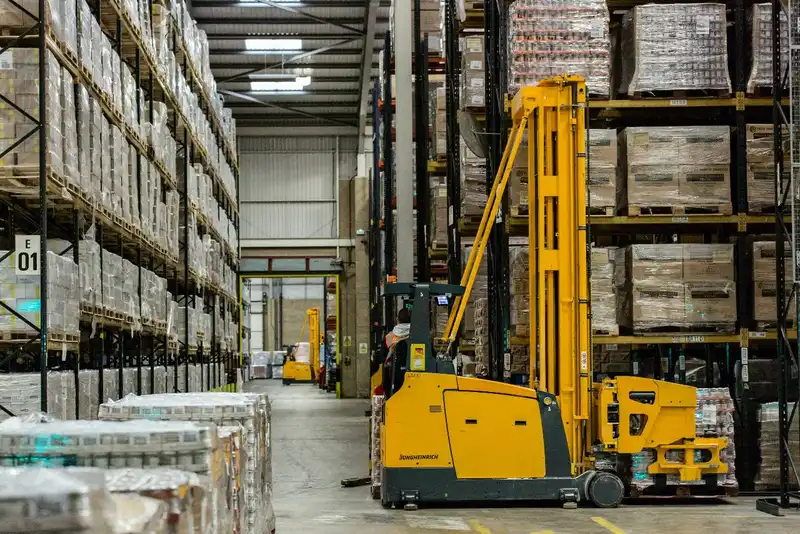Cost Reduction Techniques in Logistics- 5 Tips
Companies rely on effective supply chain logistics to meet delivery and production deadlines to keep operations on schedule. Poor logistics management can not only lead to disruptions but damaged goods and unnecessary expenses as well.
Supply chain logistics handles the flow of goods, from production to final sale, including facilitating all necessary transportation and storage. These procedures can incur hefty costs that restrict profitability, making it crucial for management to consider all supply chain logistical costs.
What is Considered Logistics and Supply Chain Costs?

While logistical costs may differ from company to company, they typically include transportation, storage, labor, and clerical fees. The most significant expenses are inventory costs, including transportation and handling fees. These expenses vary depending on the type of good. For example, perishable foods may require refrigerated trucks and units, while plastic goods can be transported normally.
The main priorities of logistics management are timely delivery and maintaining operational efficiency. However, by reducing logistical costs, businesses can balance performance and profits.
Typically, logistical expenses make up 5-50% of the total cost of goods, including purchase, freight, customs, and insurance. The most significant costs in logistics management include-
- Fuel
- Transportation
- Late Fees
- International Regulations
- Expedited Shipping
- Increased Warehouse Rates
5 Tips to Reduce Logistical Costs

Minimizing logistical costs means that companies can increase profits and focus on expansion efforts. There are several strategies to reduce these expenses, such as-
1. Utilize Software Automation
Manually supervising logistical activities can be overwhelming and create opportunities for human error. With enterprise software, businesses can automate repetitive tasks and documentation to streamline supply chain operations, such as inventory order and contacting vendors.
- Ordering Software
Software also limits the response time of traditional ordering methods, which require physical request and purchase order forms that face the risk of being misplaced. With digital software, documents are stored in a centralized database for easy access and organized filing.
Ordering software allows companies to contact vendors directly and pull catalogs. This way, management can search for suppliers that are local and offer better prices.
- Inventory Management Software
To optimize their logistics management, companies can integrate their established software to access real-time metrics and actionable insights. With forecasting software, managers can even anticipate emerging trends, so they can increase or reduce order sizes to minimize expenses and boost profits.

2. Utilize Logistics Automation
Warehouse automation streamlines product retrieval and stocking by establishing an organizational system that promotes operational efficiency. By reducing order fulfillment times, businesses can meet delivery deadlines, avoiding expedited shipping costs. Logistics automation also determines the best packaging, carriers, and transportation routes for goods to reduce shipping costs and time.
Many companies are also using robotics to handle cargo and heavy inventory to prevent employee injuries. Harmed workers can lead to compensation claims, which can cost businesses a significant amount of money. Robotics also maximize warehouse space and functionality to reduce inefficiencies.
3. Plan the Supply Chain and Incorporate Collaborations
Businesses are not alone in the supply chain. In fact, many companies collaborate with carriers and third-party logistics companies (3PL's) to reduce prices and increase service quality.
Managers also need to create back up plans to mitigate potential risks that can disrupt the supply chain. Businesses should make a list of alternative suppliers and shipping companies that can handle their order volumes if an unexpected event occurs. Whether the leading partner increased their prices or no longer meets company standards, having back up companies in place can reduce a company's vulnerability to risks, such as-
- Increased Transportation Expenses
- Increased Vendor Costs
- Logistics Network Disruptions

4. Reduce Transportation Costs
One way to minimize shipping costs is to share transportation fees with surrounding businesses, even competitors. Many times, carrier companies will reduce their shipping rates if they can consolidate orders delivered in the same area. This allows the carriers to maximize their shipping containers' usage, saving them additional trips and the clients handling fees.
Many companies reduce their transportation costs by focusing solely on the last-mile delivery, or the final delivery to the customer. Rather than trying to reduce the cost to transport goods to the business,
minimizing the cost of delivering the final product to the customer can significantly lower overall expenses.
5. Negotiate Contracts
Negotiating supplier and carrier contracts can unlock exclusive discounts and create a relationship that benefits both parties. Entering an arrangement ensures that businesses do not have to worry about fluctuating prices based on seasons, order volume, or labor. However, management needs to investigate the party to determine whether its reputation and service quality meet regulations and company standards. Without proper vetting, organizations can get locked into a contract with a non-compliant company.
By reducing logistical costs, companies can maintain workflow while expanding profit margins. This allows management to invest in new ways to improve their product quality and customer service.






